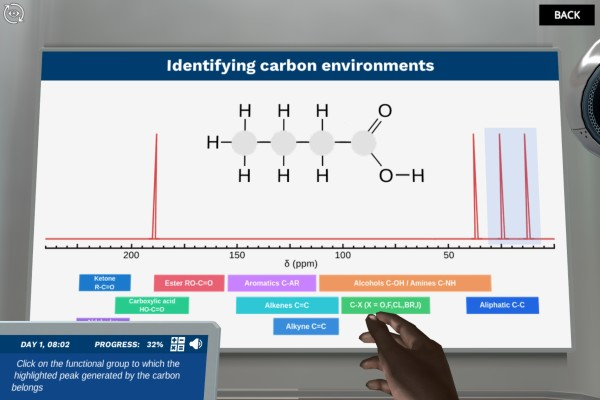
Carbon-13 Nuclear Magnetic Resonance (NMR) spectroscopy is the powerhouse of analytical techniques in chemistry. It helps elucidate the chemical structures of countless organic and inorganic compounds, and has numerous industrial and research applications.
The underlying physics of carbon NMR spectroscopy and its precise sample preparation steps make it a challenging technique to grasp. Educators must, therefore, develop creative teaching techniques for carbon NMR spectroscopy. Here, we list five engaging ways to teach carbon NMR spectroscopy to make it easier to understand and practice.
Interactive models can help students accomplish their learning goals in a way that regular classroom teaching cannot. Such models demonstrate rather than instruct, which makes them quite useful in teaching complex experimental techniques like carbon NMR spectroscopy.
To teach carbon NMR spectroscopy using interactive methods, consider providing your students NMR spectra for different unknown compounds. You can then ask the students to process the data and identify the molecular structures of the given compounds. You can also give a detailed demonstration of carbon NMR spectroscopy technique, from sample preparation to data analysis. This way, the students will be able to understand all aspects of this analytical method.
Games and activities in the classroom setting create an environment where communication is easy and learning is fun. This is exactly the kind of environment that educators need when teaching sophisticated techniques like carbon NMR spectroscopy.
For example, in Labster’s carbon NMR spectroscopy simulation, the students play a minigame to learn about:
· Carbon-13 nuclei and their characteristics
· How carbon-13 differs from carbon-12
· The role of gyromagnetic ratio and natural abundance in determining which carbon isotope is useful for NMR.

Discover Labster's carbon NMR spectroscopy virtual lab today!
Technology can help develop interactive, immersive 3D models that depict and teach different scientific concepts and experimental techniques. Students can then use these immersive models to learn even the most intricate details of the topic.
Take Labster’s carbon NMR spectroscopy simulation, for example. In our simulation, students learn how to prepare samples of an unknown organic compound for carbon NMR. The simulation essentially acts as a run-through of the actual laboratory procedure. Thus, it offers the students a chance to practice and learn the technique in a virtual environment before handling the real-world carbon NMR machine. Finally, the students must also interpret the NMR spectra to identify the molecular structure of the given unknown compound.

Carbon NMR spectroscopy can often become too challenging to learn, and students may need an extra rush of motivation. Talking about the professional jobs that carbon NMR spectroscopy can shape can become the much-needed boost that the students need. Embark on a career exploration journey with your students to inspire them to learn this technique.
Tell your students how pharmacologists use carbon NMR spectroscopy in many steps of the drug discovery and development pipeline. Talk about how metabolomics researchers use carbon NMR spectroscopy to track the fate of different cell metabolites. Tell them how polymer scientists also use this technique to understand the composition and configuration of various polymers.
Seeing that something you learn in the classroom has a significant impact in the real world can be highly motivational. Educators should ground their study topic in its real-world applications to motivate their students to learn.
For example, when teaching carbon NMR spectroscopy, tell your students how this technique helps in the forensic analysis of illicit drugs found at a crime scene. Inform them how it helps in the analysis of petroleum products and crude oil in the petrochemical industry. Discuss how carbon NMR spectroscopy can enhance our understanding of the biochemical processes that occur in our cells and tissues.
Carbon NMR spectroscopy may be sophisticated and challenging, but it is extremely useful in research as well as industry. The creative teaching methods we have discussed here can make carbon NMR spectroscopy fun to learn and easier to apply for your students.
Try our free 30-day All Access Educator's Pass today and teach with the Carbon NMR Spectroscopy simulation alongside 300+ other virtual labs!

Labster helps universities and high schools enhance student success in STEM.
Request DemoRequest a demo to discover how Labster helps high schools and universities enhance student success.
Request Demo